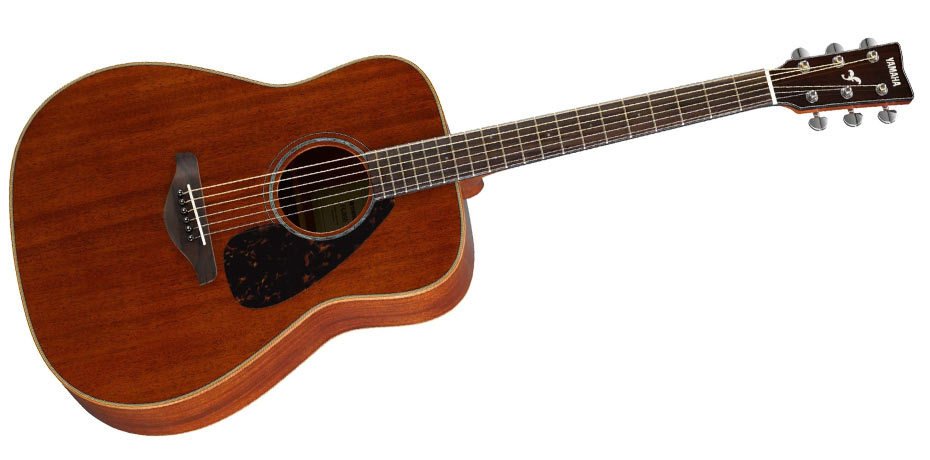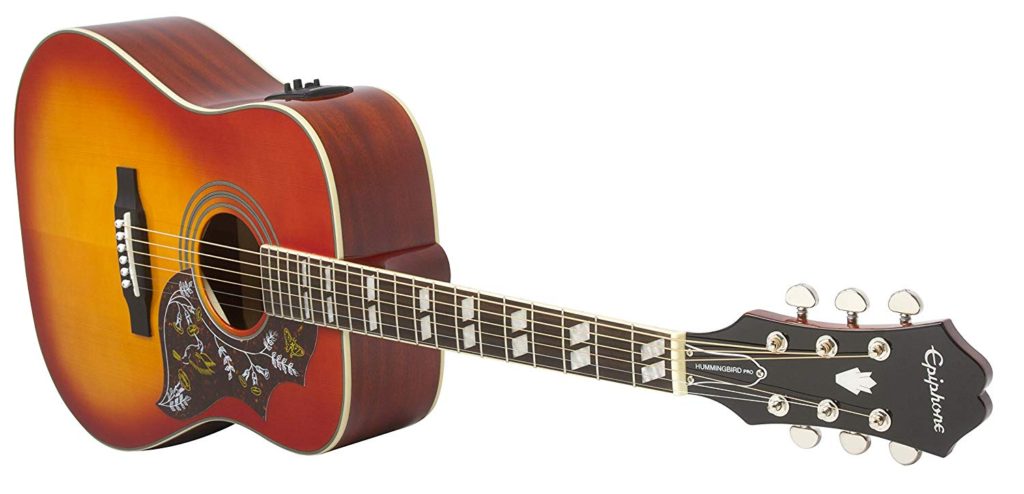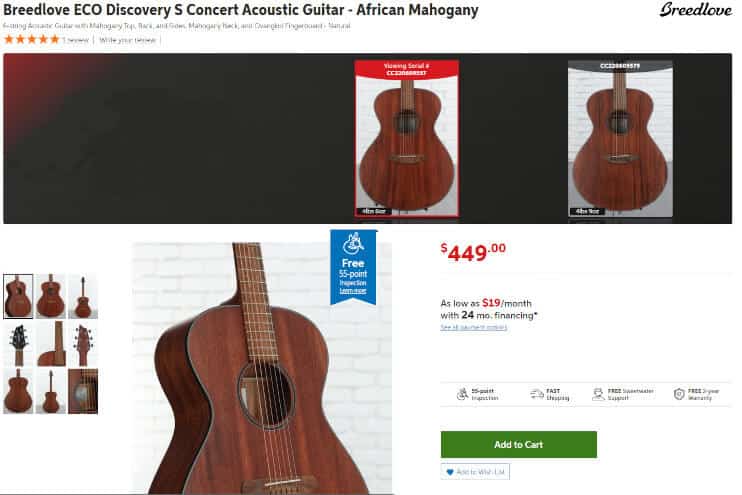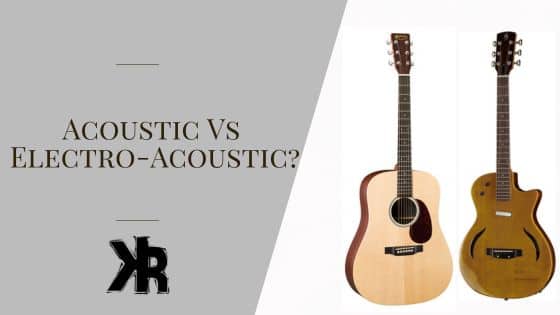Table of Contents
So, you’re stuck choosing between an acoustic and an acoustic-electric guitar. The right selection is a pivotal point for any guitarist. And with a huge range of choices out there, making that all-important decision can feel impossible.
In this Killer Rig article, I’m going to pull back the curtain on both the acoustic and acoustic-electric guitars, pitting them head-to-head to aid you in your selection. We’re going to focus on their individual perks and traits.
Quick Comparison Summary
Acoustic Guitar:
- Does not have any electronics that amplify its sound acoustically.
- Usually less expensive than electric guitars.
- Bulkier than electric guitars.
- The body is hollow with a big hole in the center, and the sound of the vibrating strings is amplified by the hollow body’s resonance.
- Can use either nylon or steel strings.
Acoustic-Electric Guitar:
- Identical in construction, tonal properties, and components to an acoustic guitar, but is fitted with a pickup and a preamp (typically with EQ and volume controls).
- Offers the option to plug into an acoustic amp, mixer, or PA system.
- Includes EQ/volume controls and a built-in tuner.
- Can be amplified easily, making it perfect for on-stage performances.
- Can come in the same shape, size, and form as an acoustic guitar.
The Main Differences
The primary differences between acoustic and acoustic-electric guitars lies in their construction and the way they amplify sound. Let’s explore some of them:
Construction
An acoustic guitar is a standalone instrument made of wood, with a hollow body that amplifies the vibrations of the strings. It doesn’t have any built-in electronics.
On the other hand, an acoustic-electric is essentially an acoustic guitar equipped with electronic components. These usually include a pickup and sometimes preamp controls for volume and tone adjustment.
Sound Amplification
In an acoustic guitar, the sound is amplified naturally through the guitar’s hollow body. There are no electronics involved.
The acoustic-electric guitar, however, offers the option to amplify the sound electronically. It can be plugged into an amplifier, a mixer, or a PA system, providing more control over the sound output.
Versatility
Acoustic guitars are often considered less versatile because they rely solely on their natural sound. They are generally used in settings where no amplification is needed.
Acoustic-electric guitars offer more flexibility. They can be played unplugged like a regular acoustic guitar, or plugged in for larger venues or recording purposes.
Acoustic Guitar
An acoustic guitar is a straightforward instrument in terms of construction. It consists of a hollow wooden body with a soundhole in the center, a neck with frets, and usually six strings.
The body’s shape and the wood type can influence the sound, but there are no electronic components involved.

Sound Characteristics
The sound of an acoustic guitar is warm, rich, and resonant. The hollow body acts as a natural amplifier, allowing the vibrations from the strings to resonate within the guitar. This produces a sound that is often described as “organic” or “natural.”
The sound sample below is of an acoustic guitar being captured by a microphone. It will allow you to hear how a regular acoustic sounds when amplified this way.
Best Use Cases
Acoustic guitars are well-suited for solo performances, small venues, and acoustic music genres like folk, country, and singer-songwriter styles.
They are also commonly used for fingerstyle playing and strumming. Because they don’t require any additional equipment like amplifiers or cables, they are convenient for travel and spontaneous performances.
Pros and Cons
Pros:
- Natural Sound: The hollow body provides a warm and rich sound without the need for electronic amplification.
- Portability: No need for additional equipment like amplifiers or cables, making it easy to transport.
- Simplicity: Easier to use for beginners as there are no electronic components to manage.
- Cost: Generally less expensive since there are no built-in electronics.
Cons:
- Limited Volume: The sound may not carry well in larger venues without external amplification.
- Less Versatility: Limited to its natural acoustic sound, with no option for electronic modification or amplification.
Acoustic-Electric Guitar
An acoustic-electric combines the features of an acoustic guitar with added electronics. The core structure is similar to an acoustic guitar, featuring a hollow body, a soundhole, and a neck with frets.
What sets it apart are the electronic components, typically a pickup and preamp controls for volume and tone adjustment.

Sound Characteristics
When unplugged, an acoustic-electric guitar sounds similar to a standard acoustic. However, when plugged in, it offers a broader range of sound options.
You can control the volume, adjust the tone, and even add effects through an amplifier or sound system. This gives you more control over your sound output.
Best Use Cases
Acoustic-electric guitars are versatile and can be used in various settings. They are suitable for solo performances, larger venues, and recording sessions.
The ability to plug into an amplifier makes them ideal for live performances where higher volume levels are needed. They are also convenient for studio recording, offering both natural and amplified sound options.
Pros and Cons
Pros:
- Versatility: Can be played both unplugged and amplified, suitable for a variety of settings.
- Sound Control: Built-in electronics allow for greater control over sound quality and volume.
- Recording Ready: Easily connects to recording equipment, offering both acoustic and amplified sound options.
- Performance Ready: Ideal for live performances in larger venues where amplification is needed.
Cons:
- Cost: Generally more expensive due to the added electronic components.
- Complexity: May require a learning curve to understand how to use the electronic features effectively.
- Additional Equipment: May require an amplifier, cables, and possibly a power source, making it less portable than a standard acoustic guitar.
Price Differences
Picking between these two acoustic choices is not an easy task, but one such factor is the price. The amount of money needed to obtain either one will be a rather large factor, and one we will look further into here.
There is a wide range of prices for both types of guitars, depending on factors such as materials, craftsmanship, and brand reputation.
Acoustic Guitars
Acoustic guitars come in a whole range of prices. You can get ones that are easy on the wallet, perfect for someone just starting out. On the other hand, there are also expensive, handmade ones that really stand out.
What makes one guitar cost more than another? There are many things! The kind of wood it’s made of matters a lot. So does the construction and attention to detail when being assembled.
You can find cheaper guitars that sound okay and are fine to learn on. But here’s the thing, spending a bit more money can get you a guitar that feels better in your hands and sounds sweeter to your ears.
The picture below is of a Breedlove acoustic guitar at Sweetwater. They are very affordable as you can see.

Acoustic-Electric Guitars
Acoustic-electric guitars are generally more expensive than purely acoustic models due to the additional cost of built-in pickups and electronics.
The price range for these instruments varies widely, accommodating different budget constraints. The cost is influenced by several factors, including the type and quality of electronic components used.
The construction materials and craftsmanship also contribute to the price. If you’re considering converting an acoustic guitar to an acoustic-electric by adding pickups or microphones, be aware that these modifications will incur additional costs.
Therefore, these factors should be considered when comparing the costs of acoustic and acoustic-electric guitars.
The table below compares popular models and their prices:
| Model | Type | Approximate Cost (USD) |
|---|---|---|
| Yamaha FG800 | Acoustic | $229.99 |
| Yamaha APX600 | Acoustic-Electric | $339.99 |
| Taylor Big Baby | Acoustic | $499.00 |
| Taylor 214ce | Acoustic-Electric | $1599.00 |
| Martin D-28 | Acoustic | $3199.00 |
| Martin GPC-16E | Acoustic-Electric | $1999.00 |
Conclusion
The decision between an acoustic and an acoustic-electric guitar is a personal one. Influenced by factors such as sound and tonal, versatility, performance, and price. Both types of guitars offer benefits and cater to different preferences and playing situations.
By carefully assessing your personal requirements, evaluating your budget, and trying out different guitars personally, you can make an informed decision. One that will best serve your musical needs and aspirations.

